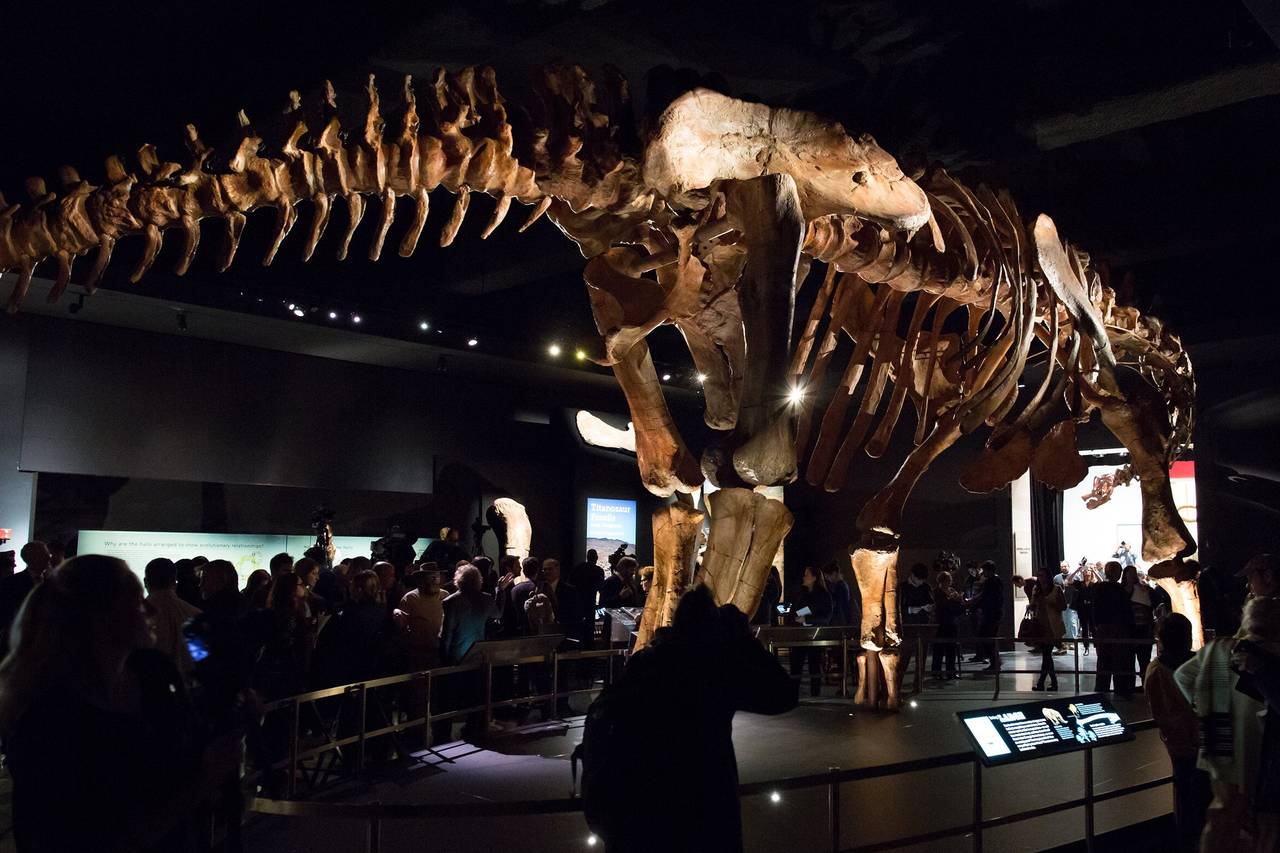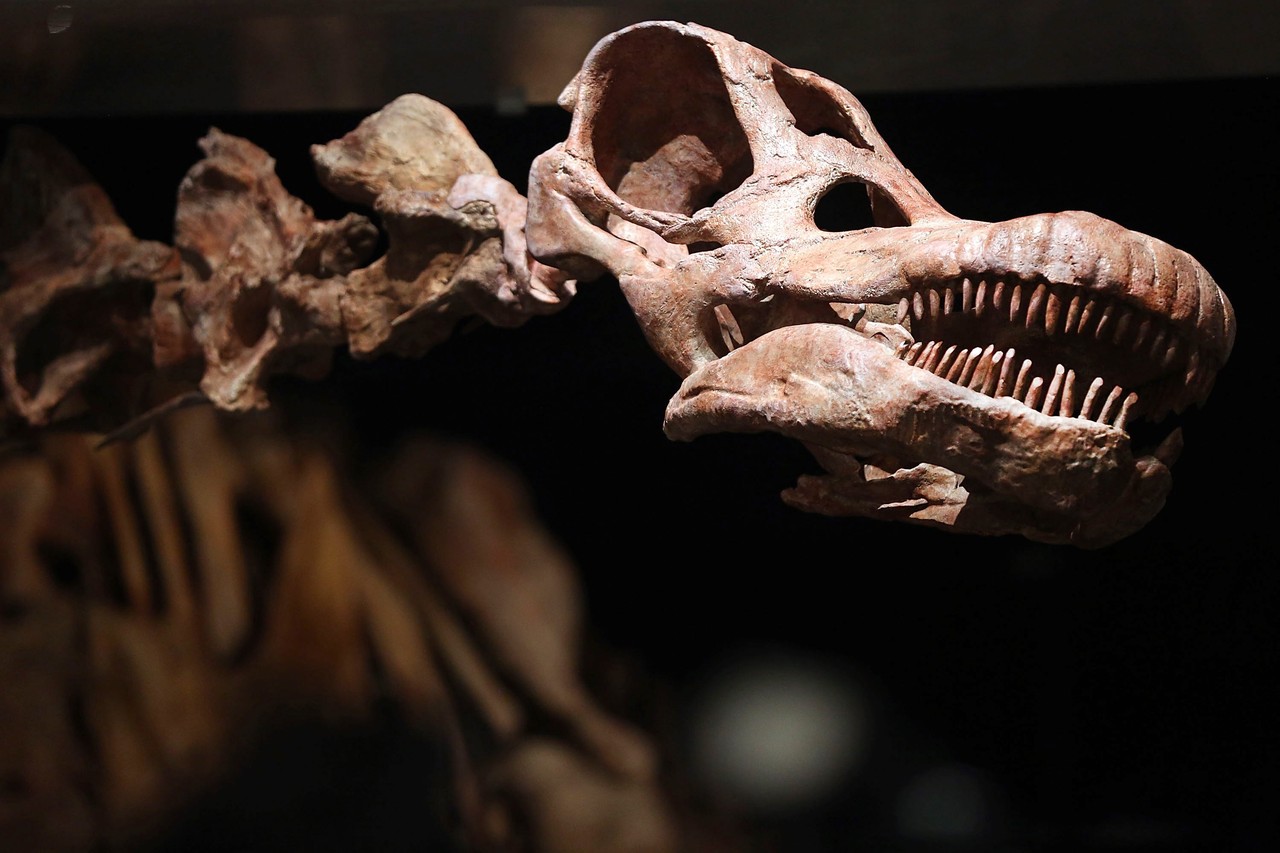One hundred million years may be a long time to wait, but the new Titanosaur at the American Museum of Natural History looked cool, calm and collected in its first brush with the public on Thursday.
Previewed in advance of its full unveiling on Friday, the giant dinosaur, among the biggest ever found, commanded the room that will be its new home, with its head craning out past an entryway to stare down museum visitors.

image:wsj.com
“Isn’t he something?” asked Ellen Futter, president of the museum, before adding a stipulation: “For the record, we don’t actually know if it’s a he or a she.”
The dinosaur, which was excavated in 2014 in Argentina and remains so new it doesn’t have an official scientific name, stretches 122 feet long and features a small head at the end of a curling 39-foot neck.
Instead, the Titanosaur, a known herbivore, would have eaten with its neck swaying side to side—“like a lawn mower going across the top of the ground.”“A lot of these animals you’ll see with their necks way up, like giraffes feeding off the tops of trees, but we know that didn’t happen with this one,” said Mark Norell, chair and curator of the museum’s paleontology division.
Movement of any kind, he added, would have taken a lot of energy for a dinosaur larger than any the museum has ever shown.
“It’s crazy how big it is,” said Peter May, who crafted the giant skeleton in fiberglass with his company Research Casting International, which has also made model planets for the museum and renovated its famous blue whale.

image:wsj.com
The work involved several trips down to Argentina to digitally scan fossil bones, some still being excavated from the ground, to bring back home for 3-D printing in Ontario, Canada.
“Sending down drums of rubber and fiberglass would have been a logistical nightmare—it’s a lot easier to go in with a scanner and bring back a CD or DVD with all the data on it,” Mr. May said.
Each printed bone drew from 10 to 15 scans and, with others made from plaster casts, fitted together into the colossus that Ms. Futter said she expected to serve as an “outsize ambassador” for the museum and its celebrated dinosaur collection.
The creature likely hatched from an egg around the size of a volleyball and grew into its hulking stature, according to Diego Pol,one of the paleontologists who excavated the Titanosaur in a remote desert region of Argentine Patagonia.
Mr. Norell said he looks forward to being greeted by it every day after arriving at work and walking past his favorite imperial mammoth.“I had a look at the Barosaurus and that was a big animal,” Mr. May said of the illustrious specimen in the museum’s main entryway, “but then you work with this one and all of the sudden it just pales.”
“It’s really imposing,” he said of the elephantine beast, “but this is so much bigger. Everybody who comes here is going to remember this thing.”
USA Records Organization_USKINGS are still collecting more information from many sources and it is our pleasure listening to everybody's comments to have a full evaluation of the USA Record story:“Story about the biggest dinosaur in American Museum of Natural History“
According to wsj.com
USA RECORDS ORGANIZATION_USKINGS




